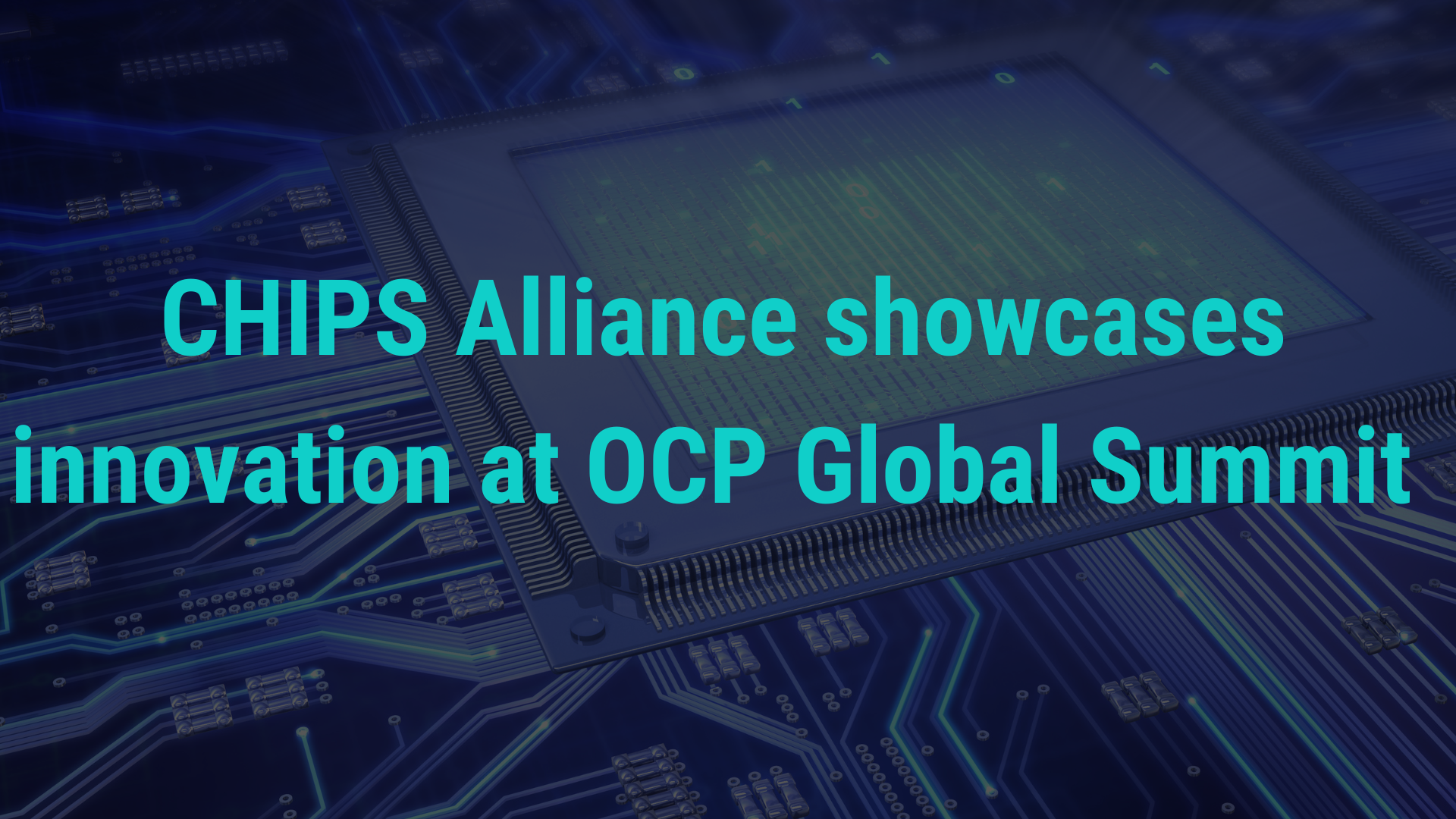Structuring Open Silicon - A TAC Perspective with Aaron Cunningham
How a globally distributed program manager is helping define the next phase of open source silicon collaboration.
Introduction
Aaron Cunningham serves as Chair of the CHIPS Alliance Technical Advisory Council (TAC) and is a Technical Program Manager at Google focused on tooling, architecture, and hardware optimization. From managing infrastructure in Singapore to advocating for cross-project clarity at the Linux Foundation, Aaron brings a uniquely strategic lens to the complexities of scaling open source silicon.
This follow-on piece from his introduction captures Aaron’s perspective on project health, onboarding contributors, and the evolving governance needed to mature the ecosystem.
Global Context, Local Commitment
Now based in Singapore, Aaron relocated from the U.S. as part of a personal and professional transition. “I wanted to make a move to try something new, so I worked backward from that to build a business case with Google,” he explained.
After three years embedded in the Asia-Pacific region, he’s focused on enabling distributed collaboration across CHIPS Alliance, with particular emphasis on clarity and consistency, from documentation to governance.
Technical Governance, Not Just Technical Output
As TAC Chair, Aaron’s focus is less on writing HDL and more on aligning people, roles, and resources. His philosophy is simple: the house must be in order before you invite people over.
| “We need to tighten up first. Governance docs, life cycles, what sandbox means… these are scattered and unclear. That has to be fixed before we talk about growing membership.”
He sees success for CHIPS Alliance not just in releases or technical milestones, but in the predictability and reproducibility of its structure.
Cross-Project Advocacy
Aaron has observed challenges in onboarding and messaging from across the open source landscape. At the CHIPS Alliance, he is focused on reducing friction by clarifying roles, documentation, and collaboration pathways.
| “We want to answer: ‘If I work in this area, what license do I need, which projects do I care about, and how do I plug in?'”
He believes the key lies in simplifying contributor journeys and building toward a shared messaging framework that reflects real, bottom-up technical input.
Project Health and Quiet Crises
One of Aarons’s first actions as TAC Chair has been hosting one-on-one check-ins with maintainers, building on an initiative started by Stephano Cetola, the previous TAC Chair. These internal project presentations are not designed for public blog posts, but are candid assessments of:
-
Burnout risk
-
Dependency dead-ends
-
Contributor drop-off
For example, the Verible linting tool, widely used in SystemVerilog design flows, is in steady use, but maintained almost entirely by one individual.
| “We get 2–4 issues a week from the community, which is great! But there’s usually only one person responding. That story is common in open source, so sustainability is definitely a concern.”
He says he’s working on plans to address part of this on behalf of Google by releasing more in-depth documentation, which can help contributors better understand Verible’s behavior and potentially create a roadmap of small, impactful tasks.
From Tools to Contributors: Lowering the Barrier
Aaron sees an opportunity to position Verible—and projects like it—as excellent entry points for new developers, especially students.
| “We need a ‘first pull request’ list. Linting and formatting tools can be a great starting point for learning how to contribute. They may not sound exciting at first, but it’s hard to overstate their impact, like spell checkers. Everyone who writes in a language uses them!”
He’s also assisting with building out an advocacy deck and documentation for:
-
How to talk to your manager about contributing
-
Why open source silicon matters
-
What it means to join and support a project
This aligns with his broader goal: making the CHIPS Alliance more discoverable, educational, and approachable.
Content Strategy and Keyword Precision
Aaron is careful with language. He notes that phrases like “open source hardware” are often too vague to be useful.
| “Everyone tries to define the term. That’s a trap. It means different things to different groups, depending on where they fit in the stack. Let’s just be specific about the elements we’re focusing on.”
For CHIPS, that means prioritizing messaging around open source silicon and chip design tooling, rather than conflating hardware with embedded systems or maker boards.
What Comes Next: 2026 and Beyond
Aaron outlines a pragmatic roadmap:
- Clean up internal documentation: Clarify project life cycles, TAC scope, and governance paths
- Build clear value propositions: Explain what members gain, how to contribute, and why it matters
- Grow contributor base: Use developer spotlights, onboarding content, and shared messaging to attract and retain participants
He envisions a more cohesive, approachable CHIPS Alliance with updated branding, a restructured homepage, and technically grounded outreach.
Closing Remarks
Asked about what success looks like, Aaron doesn’t point to big launch events or ambitious rebrands.
| “If in 2026 we have a stable structure, a clean set of public docs, and a few more contributors who feel welcome and engaged, that would be a win.”
Sometimes governance is infrastructure too. And like silicon, the best infrastructure is often invisible when it’s working.
Get involved in the community today:
- CHIPS Alliance TAC Info: https://github.com/chipsalliance
- Verible: https://github.com/chipsalliance/verible
- Join a Project or Ask Questions: Weekly TAC calls or GitHub Discussions


